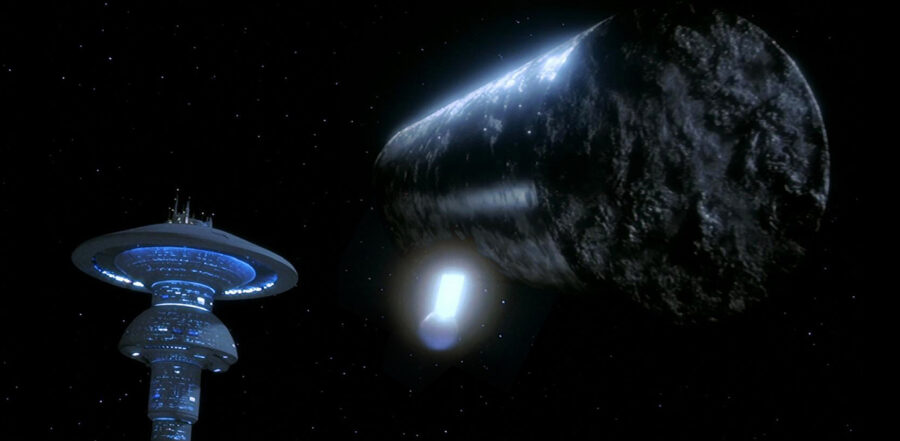Scientists Find Structures In Space That Are Light-Years In Length
Scientists discover hundreds of one-dimensional filaments in space.

It turns out those stretched-out hyperspace lines from Star Wars are real. Sort of. According to EurekAlert!, a team of astrophysicists has discovered a bunch of one-dimensional filaments between 5-10 light-years in length chilling in the middle of our galaxy, the Milky Way.
While the long white lines that appear when Han Solo throws the hyperspace lever on the Falcon are actually stars, these new filaments are thought to be some kind of outflow from Sagittarius A—a supermassive black hole that lies at the center of the Milky Way. Essentially the filaments are exceptionally long strings of electrons interacting with a magnetic field. These new filaments run horizontally and only appear on one side of Sag A, leading scientists to believe they were birthed from the black hole millions of years ago.
That’s right; these “new” one-dimensional space strings aren’t exactly new. Even if we set aside their age, the existence of gigantic one-dimensional filaments in the Milky Way was discovered back in the early ’80s by astrophysicist Farhad Yusef-Zadeh. The filaments Yusef-Zadeh discovered, however, were huge vertical monoliths measuring up to 150 light-years high. It’s the horizontal orientation of the new filaments that make them so interesting.
“I’m used to them being vertical,” Yusef-Zadeh confessed in the new paper released by Northwestern University. “I never considered there might be others along the plane.” Yusef-Zadeh went on to explain that studying the Milky Way’s filaments could help scientists learn more about the way Sag A spins and its orientation relative to the rest of the Milky Way.
The old vertical filaments first discovered hanging around the Milky Way in 1984 run perpendicular to the galactic plane. The new horizontal filaments, however, are parallel to the plane and point radially toward the black hole at the center of our galaxy. Another difference between the two types of filaments is how they behave.

The up and down lines are magnetic and relativistic, while the left and right lines appear to emit thermal radiation. The Milky Way’s vertical filaments contain particles moving at close to lightspeed, the horizontal ones accelerate thermal material in a molecular cloud. Comparing the two is like the celestial equivalent of comparing apples to oranges.
Yusef-Zadeh credits enhanced radio astronomy technology, specifically the South African Radio Astronomy Observatory’s MeerKAT telescope. The scientist used a special technique to remove the background from images taken with the MeerKAT while also smoothing out the noise in order to isolate the filaments from everything else surrounding them. Yusef-Zadeh called the new MeerKAT images a “game changer.”
As scientists well know, every new discovery brings with it a million new questions, and these horizontal filaments are no exception. Yusef Zadeh is hard at work unraveling all of the new Milky Way mysteries that come with the new filaments. “Our work is never complete.” confessed Yusef-Zadeh. The astrophysicist went on to stress the importance of always making “new observations,” constantly challenging existing ideas, and refining analysis.
These filaments are just one more clue that points toward the center of the Milky Way and the black hole that sits there as the key to understanding our whole galaxy better. Sag A is a swirling black mass of curiosities like these horizontal filaments, waiting for scientists to discover them.












